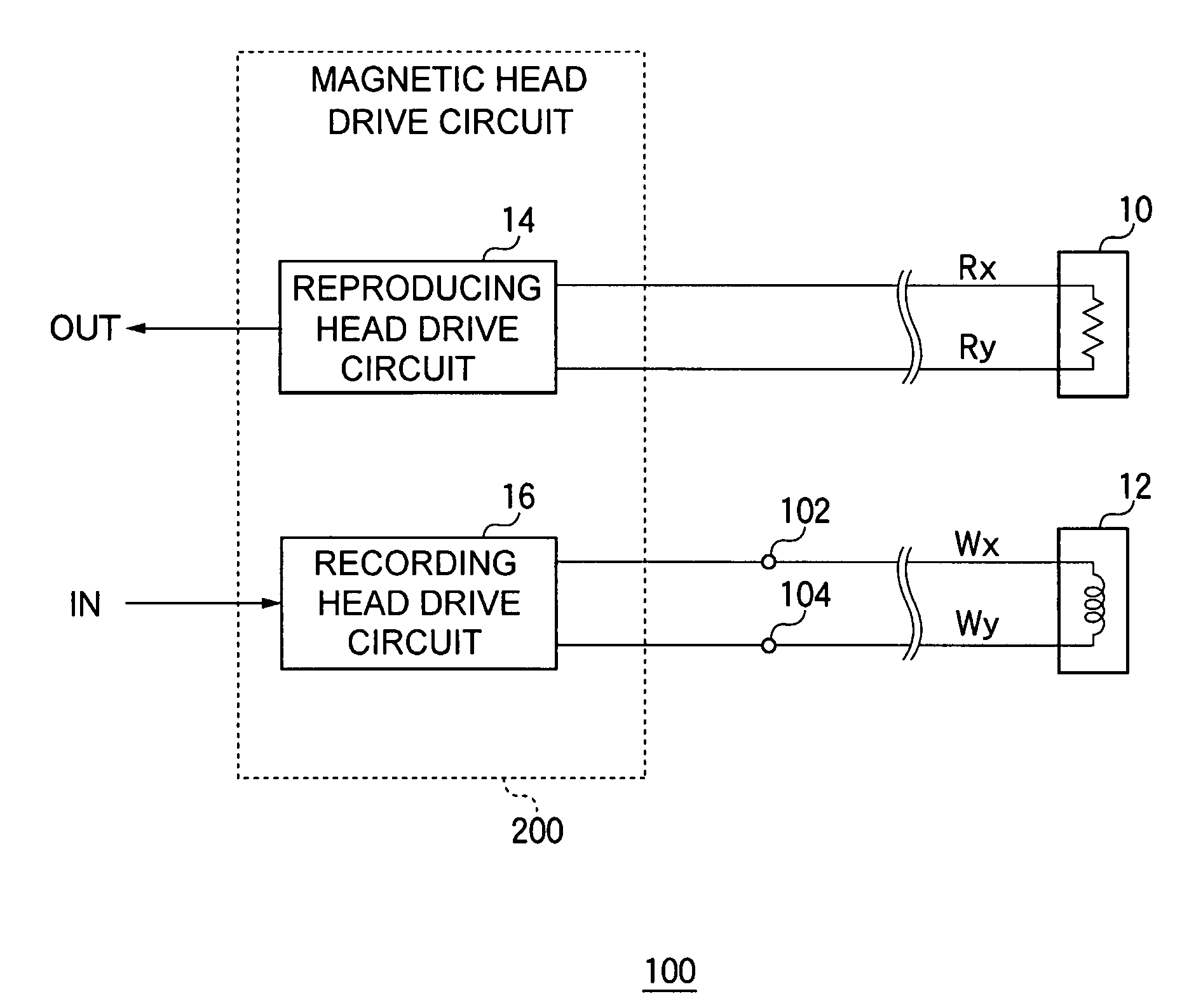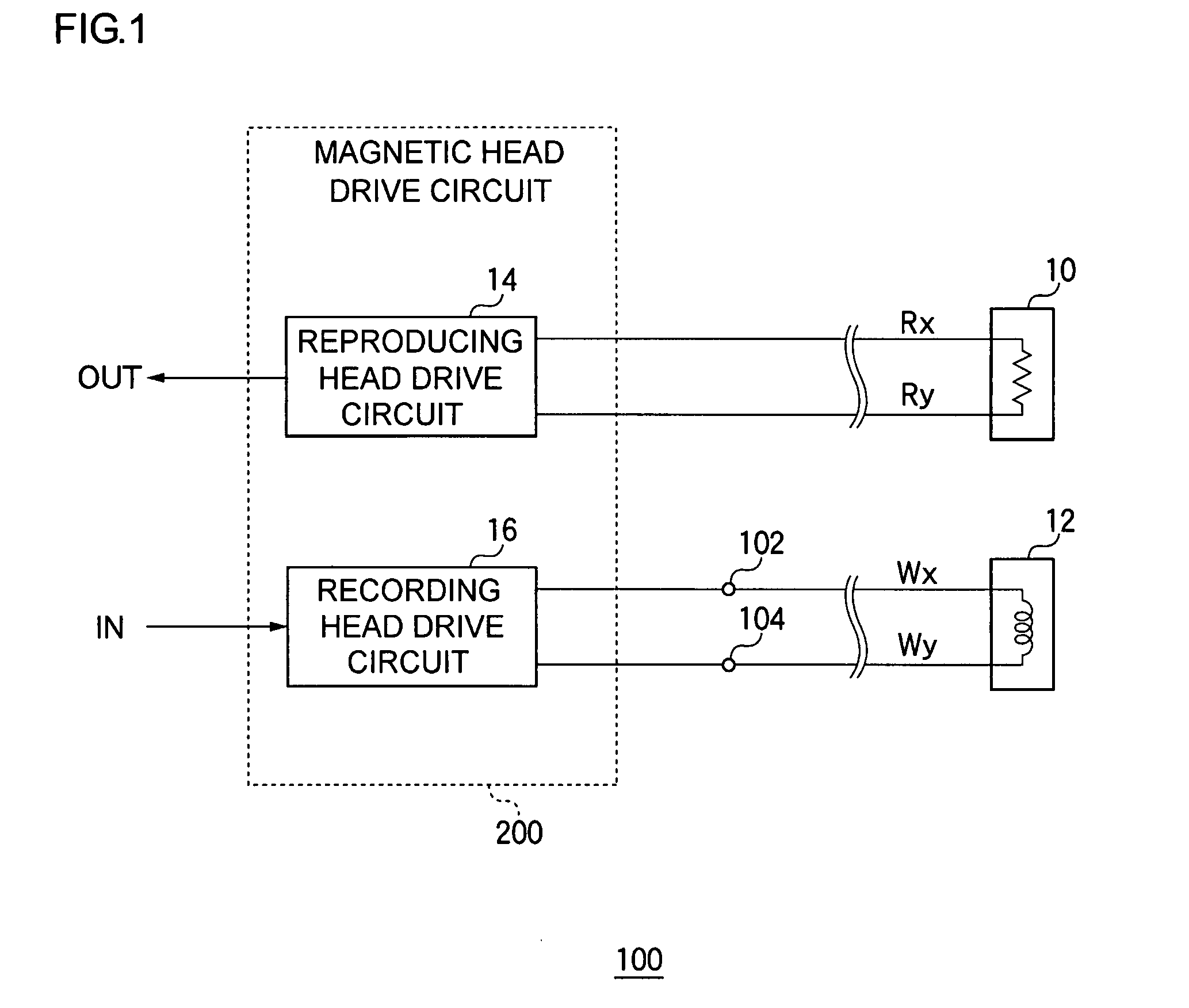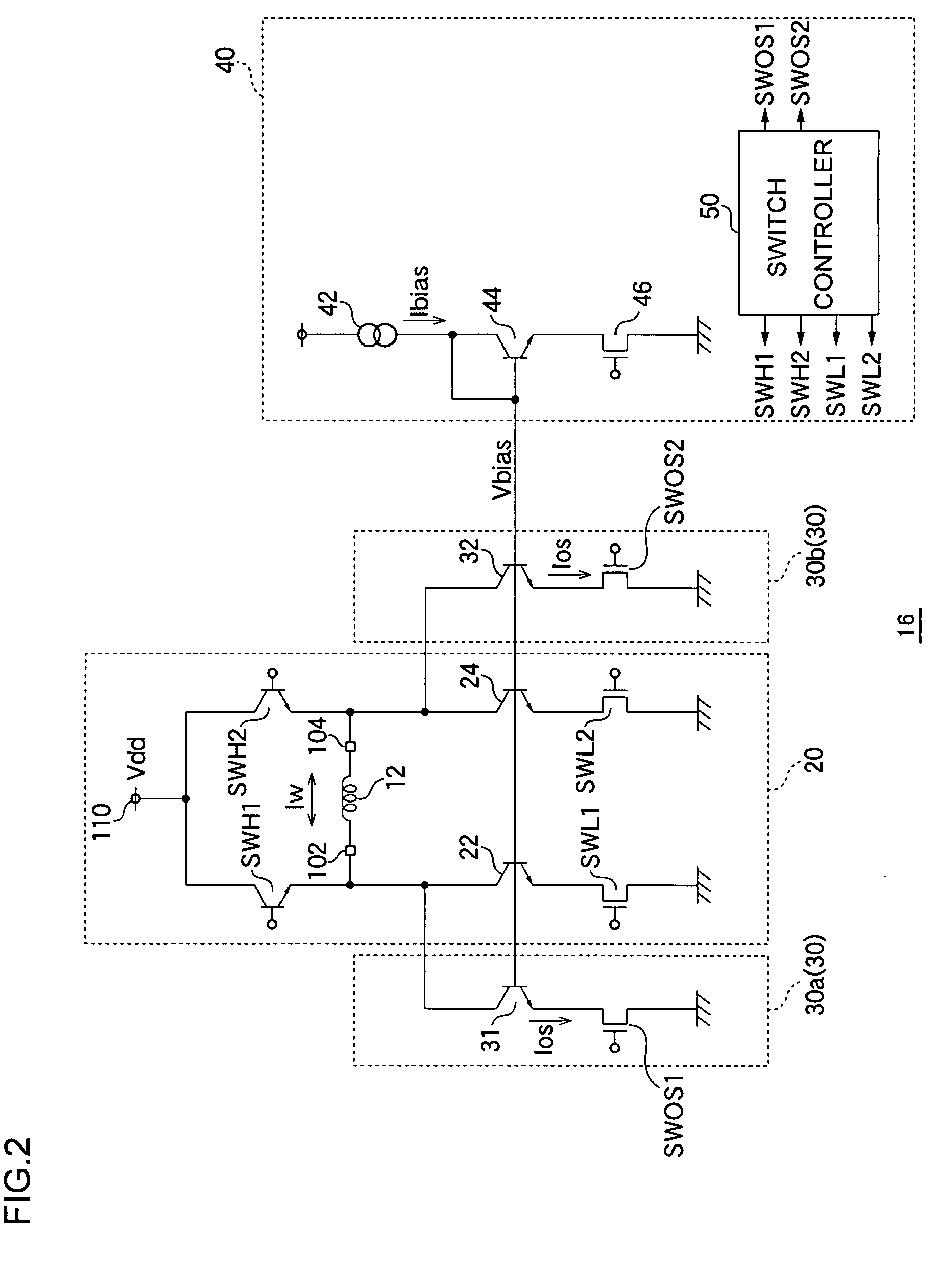Magnetic head drive circuit
a head drive circuit and head drive technology, applied in the direction of h-bridge head driver circuit, data recording, instruments, etc., can solve the problem of deleting information in neighboring tracks, and achieve the effect of reducing circuit area, improving writing performance, and maintaining uniformity of circuit elements
- Summary
- Abstract
- Description
- Claims
- Application Information
AI Technical Summary
Benefits of technology
Problems solved by technology
Method used
Image
Examples
first embodiment
[0051]FIG. 1 is a circuit diagram showing a configuration of a magnetic recording and reproducing apparatus 100 according to a first embodiment. This magnetic recording and reproducing apparatus 100 is a hard disk device for writing information to, or reading information from, a magnetic disk not shown in the figure, and includes a reproducing head 10, a recording head 12, and a magnetic head drive circuit 200.
[0052]In this magnetic recording and reproducing apparatus 100, a coil is installed in the recording head 12, and is disposed adjacent to the magnetic disk that rotates at a high speed. When a signal current, corresponding to information that is to be recorded, flows, an induction field is generated in the coil of the recording head 12, the magnetic disk is magnetized by a magnetic flux that escapes from a magnetic gap, and the information is written.
[0053]The reproducing head 10 includes an MR element in which a resistance value changes according to magnetic flux, and since t...
second embodiment
[0093]In general, since the overshoot time period Tos is normally extremely short, being a few hundred ps, the current flowing in each of the transistors 22, 24, 31, 32, and 44 deviates from a current value determined by a mirror ratio of the current mirror circuit. As a result, under a certain condition, cases are envisaged in which the overshoot amount of the write current Iw cannot be adequately controlled in the circuit according to the first embodiment. The second embodiment explained below is combined with technology explained in the first embodiment, or is used alone, and relates to technology for accurately controlling overshooting of the write current Iw.
[0094]FIG. 6 is a circuit diagram showing part of a configuration of the recording head drive circuit 16a according to the second embodiment. The recording head drive circuit 16a according to the second embodiment is distinguished in that a clamp circuit 60 is provided.
[0095]The clamp circuit 60 performs clamping such that ...
third embodiment
[0103]The second embodiment focuses on behavior when the voltage Vx and Vy of the two terminals of the recording head 12 swing in a ground (or negative supply voltage) direction, and an explanation was given concerning technology for controlling the overshoot amount. Compared with this, the third embodiment explained below focuses on behavior when the voltage Vx and Vy of the two terminals of the recording head 12 swing in a supply voltage Vdd direction, and concerns controlling the overshoot amount.
[0104]FIG. 9 is a circuit diagram showing a configuration of a recording head drive circuit 16b according to the third embodiment. A pull-up circuit 70, during an overshoot time period Tos, pulls up the voltages Vx and Vy of the two terminals of the recording head 12 independently to a predetermined pull-up level. Below, the write current Iw flowing in the recording head 12 has a first direction when flowing from the first terminal 102 to the second terminal 104, and has a second directi...
PUM
 Login to View More
Login to View More Abstract
Description
Claims
Application Information
 Login to View More
Login to View More - R&D
- Intellectual Property
- Life Sciences
- Materials
- Tech Scout
- Unparalleled Data Quality
- Higher Quality Content
- 60% Fewer Hallucinations
Browse by: Latest US Patents, China's latest patents, Technical Efficacy Thesaurus, Application Domain, Technology Topic, Popular Technical Reports.
© 2025 PatSnap. All rights reserved.Legal|Privacy policy|Modern Slavery Act Transparency Statement|Sitemap|About US| Contact US: help@patsnap.com



